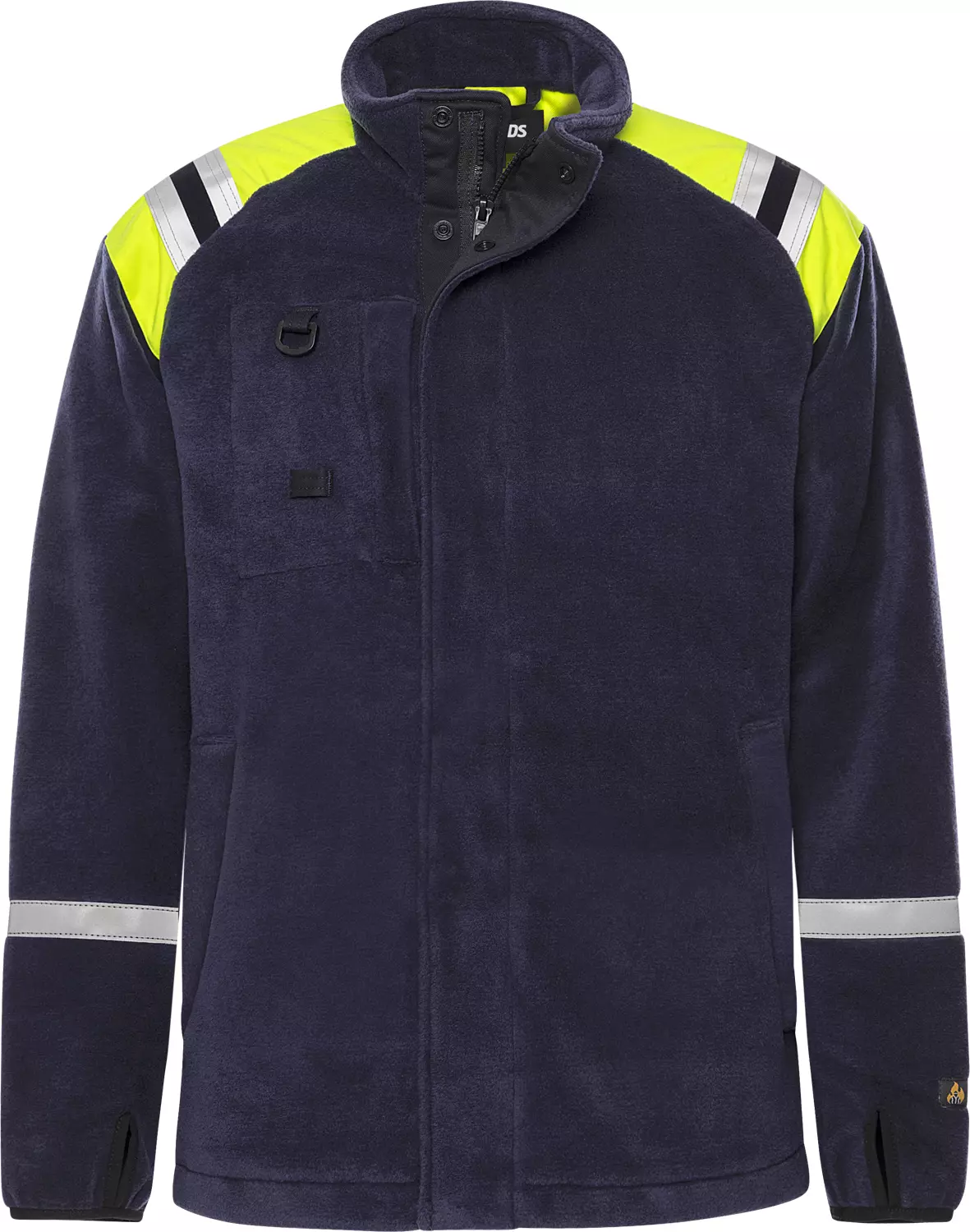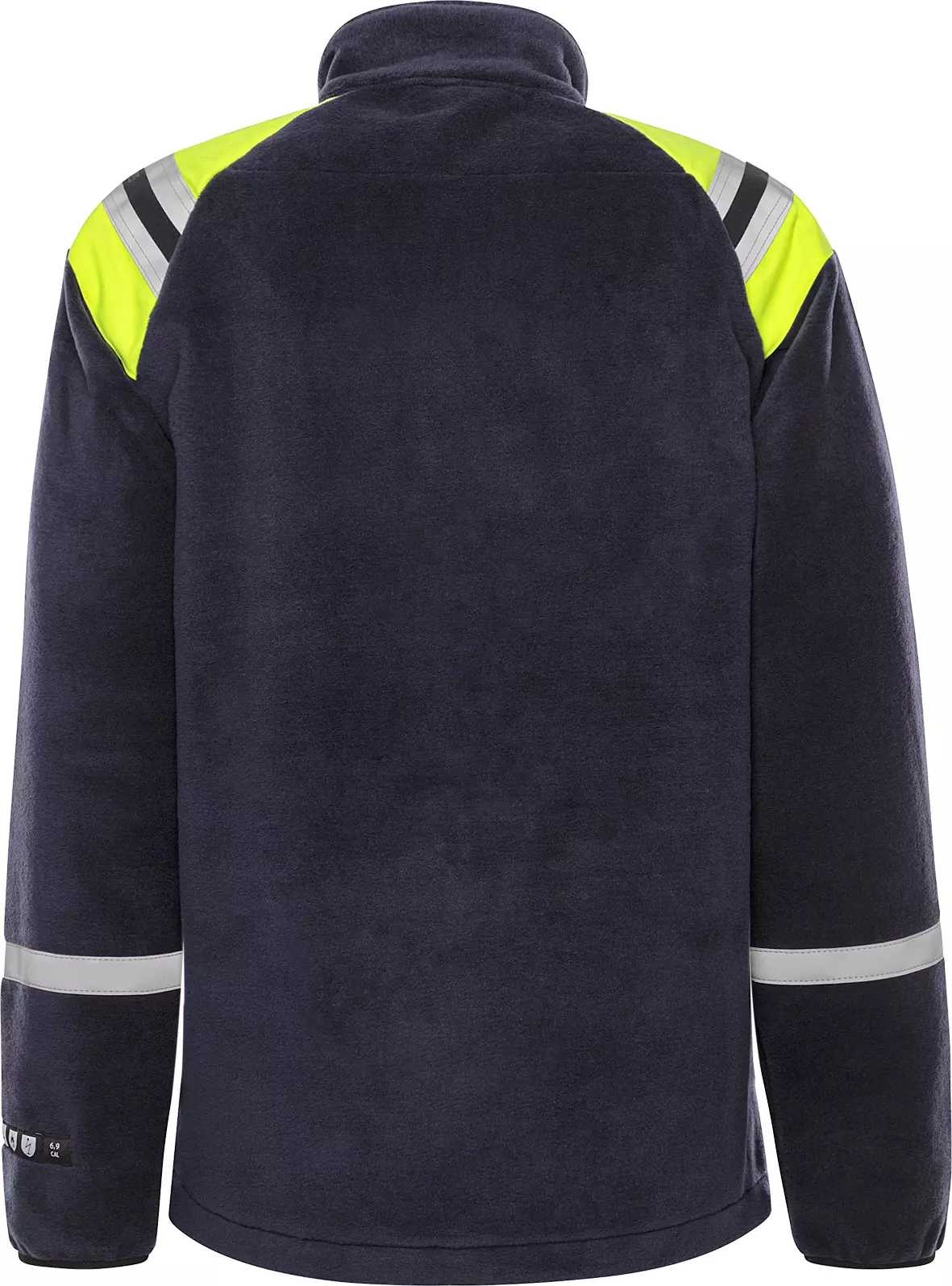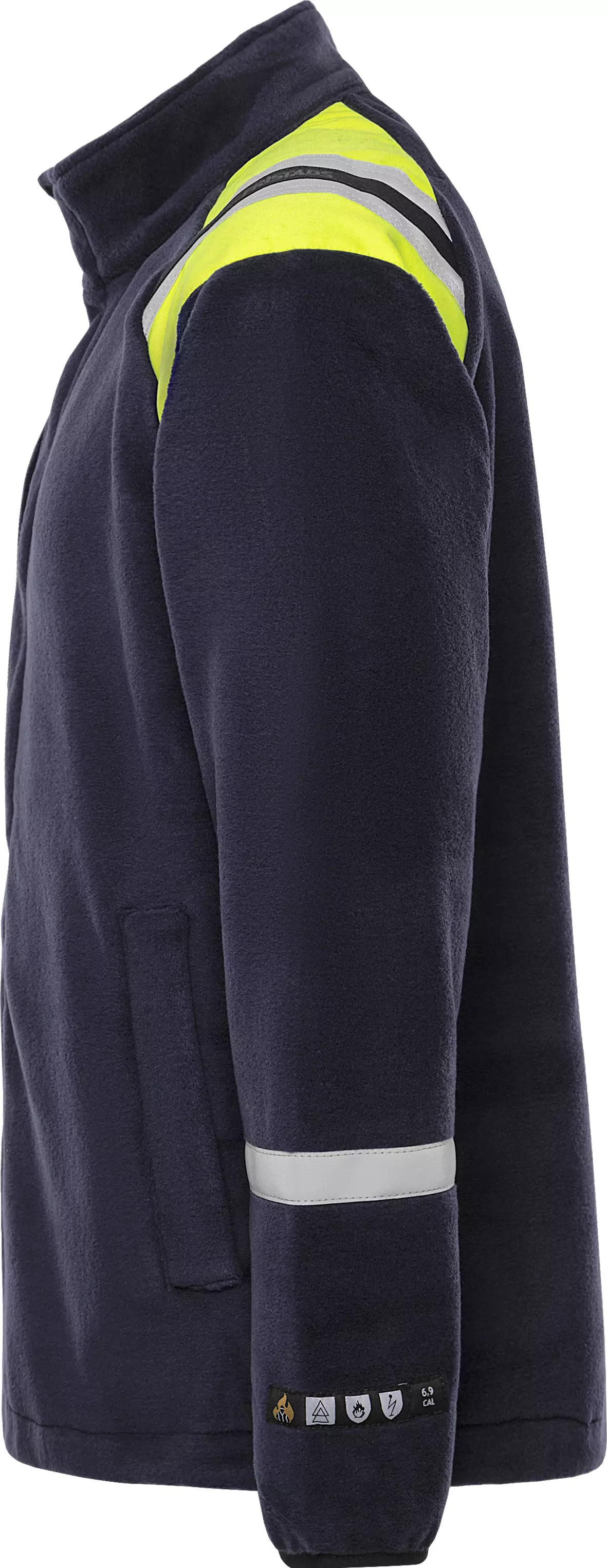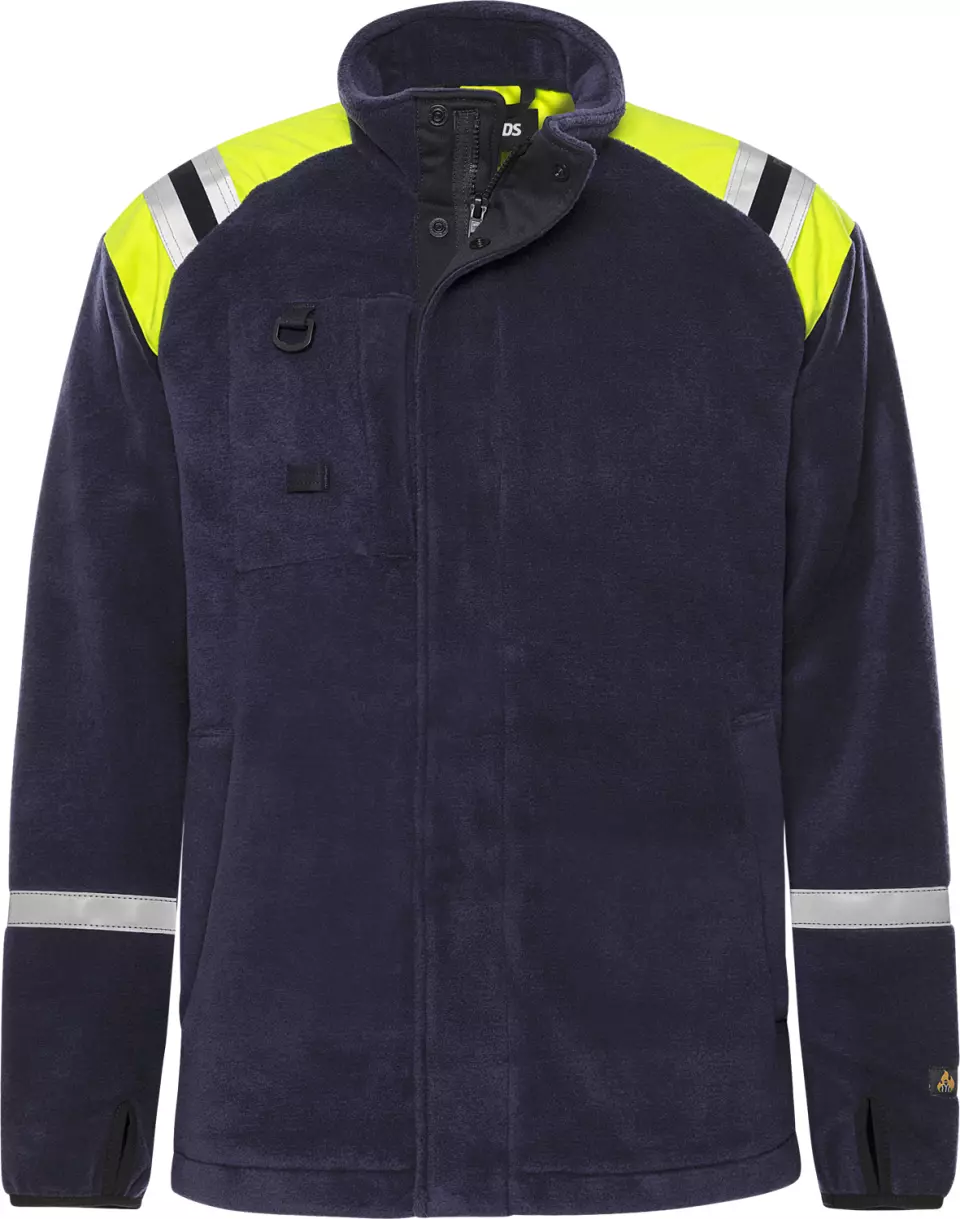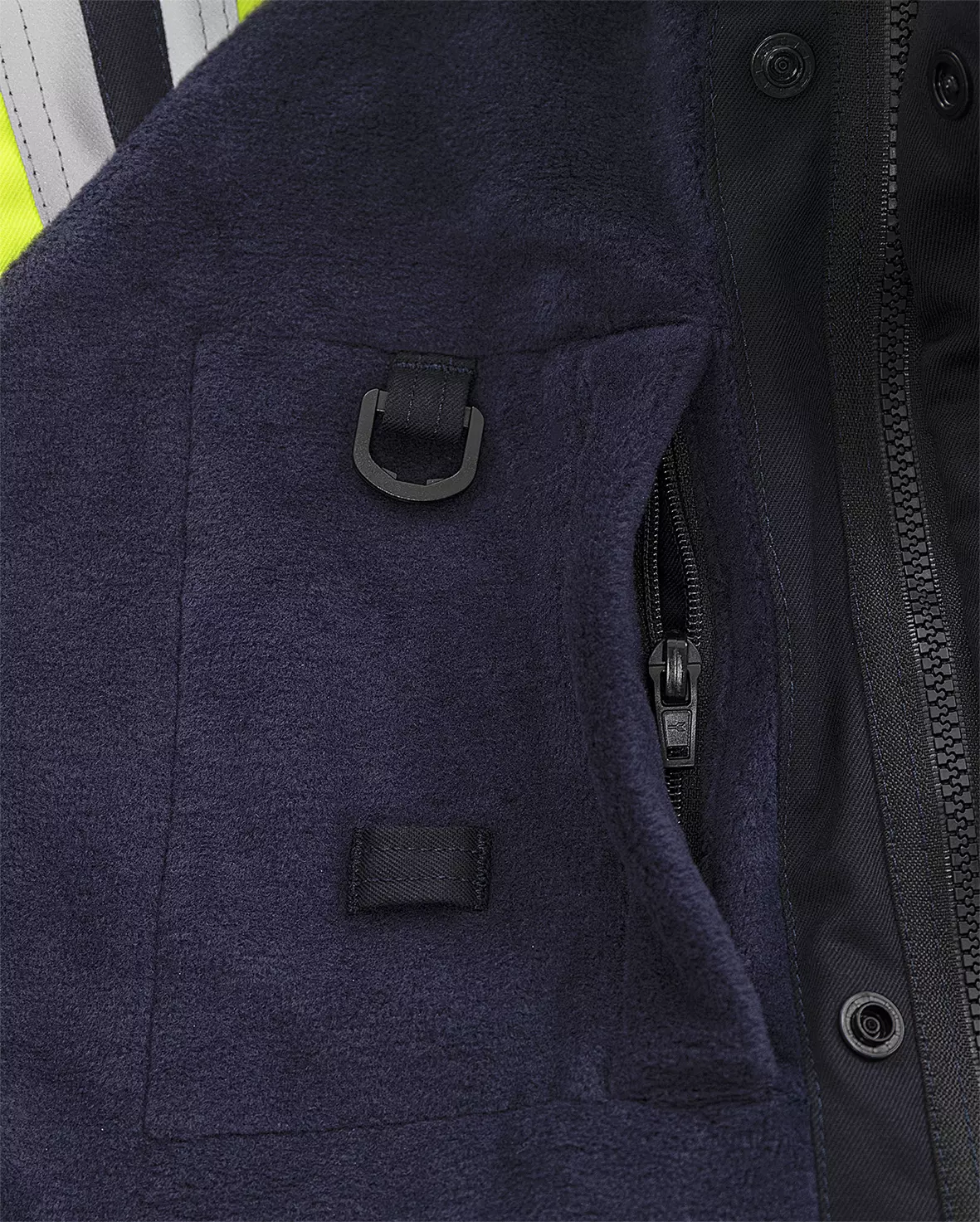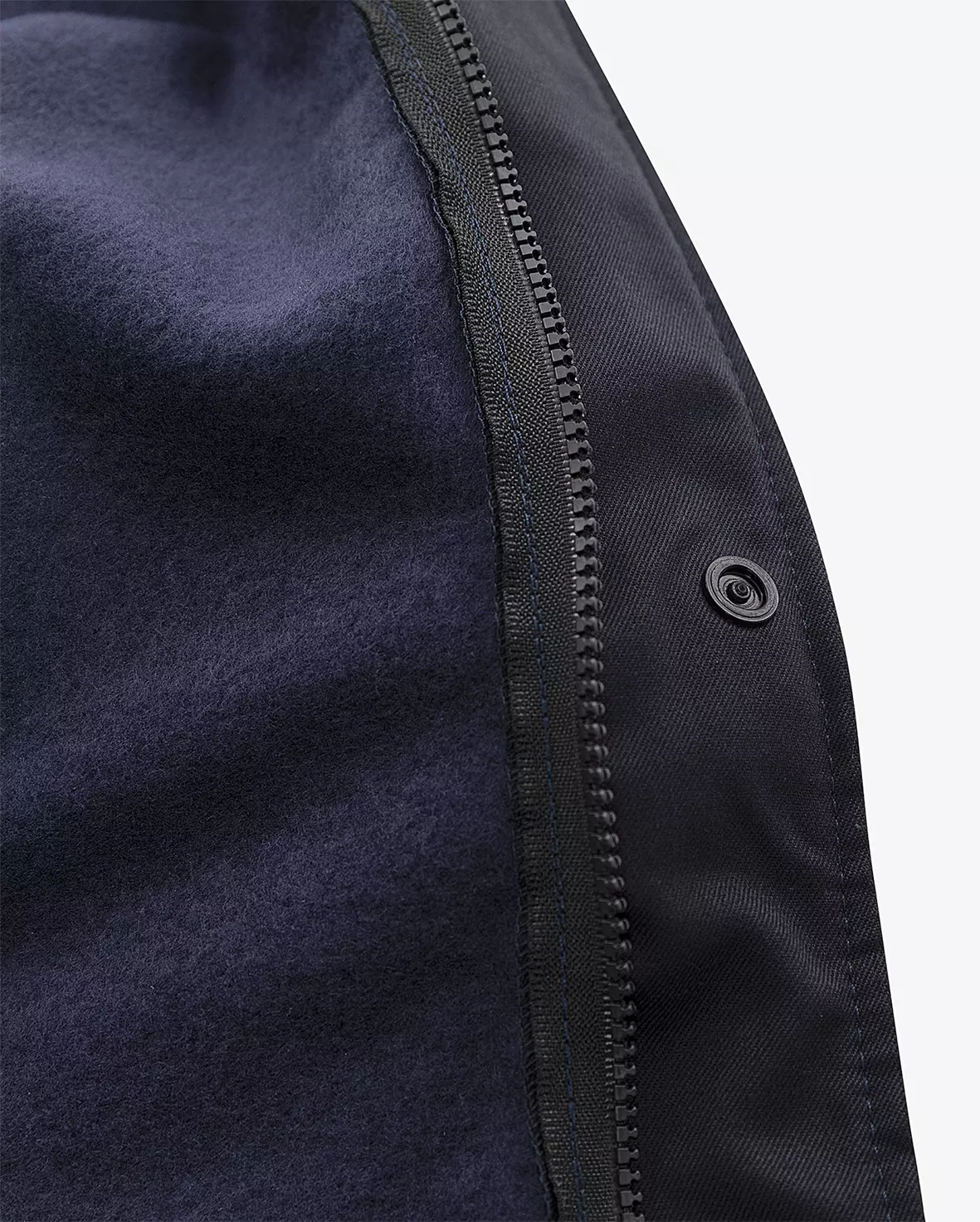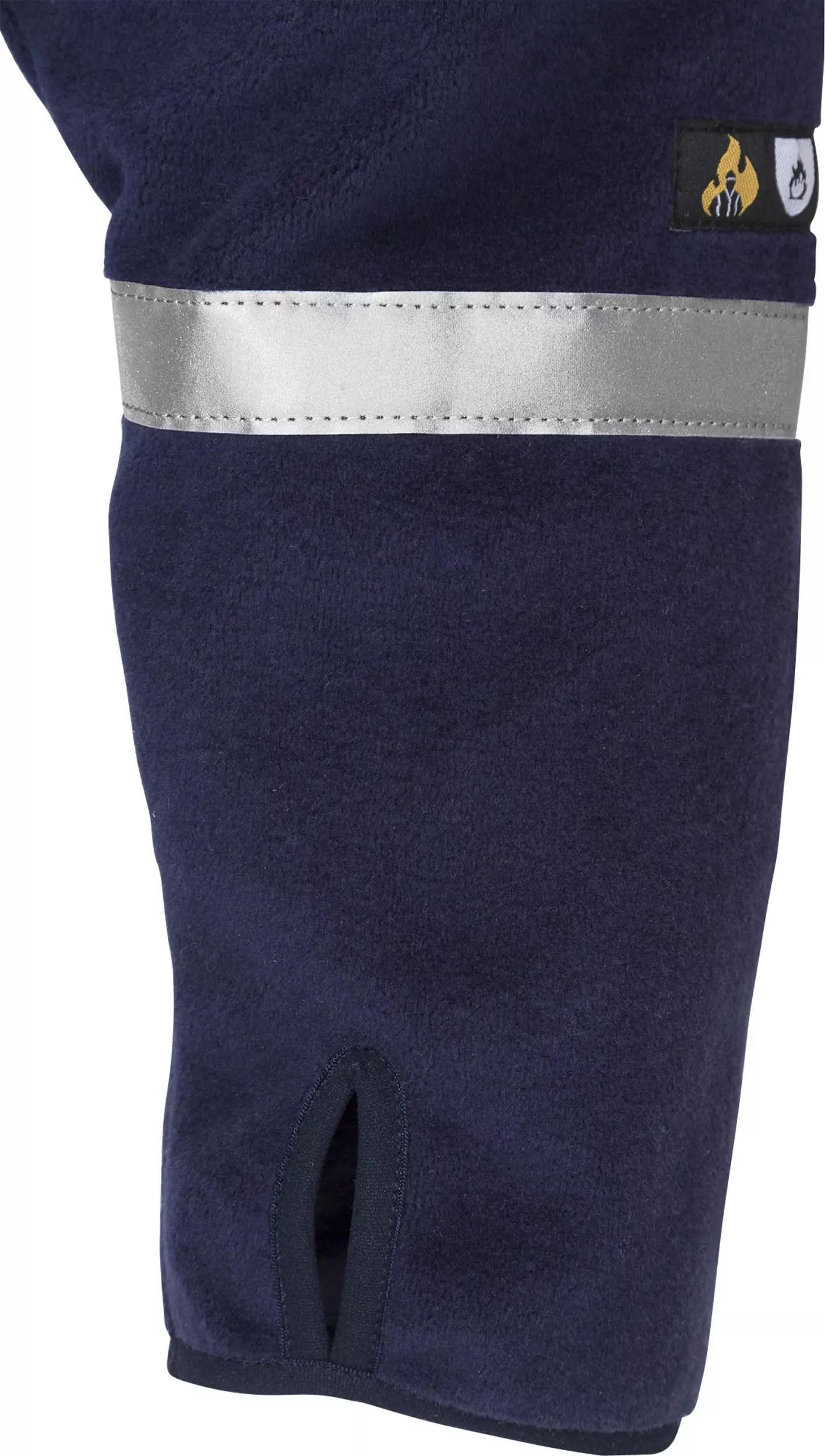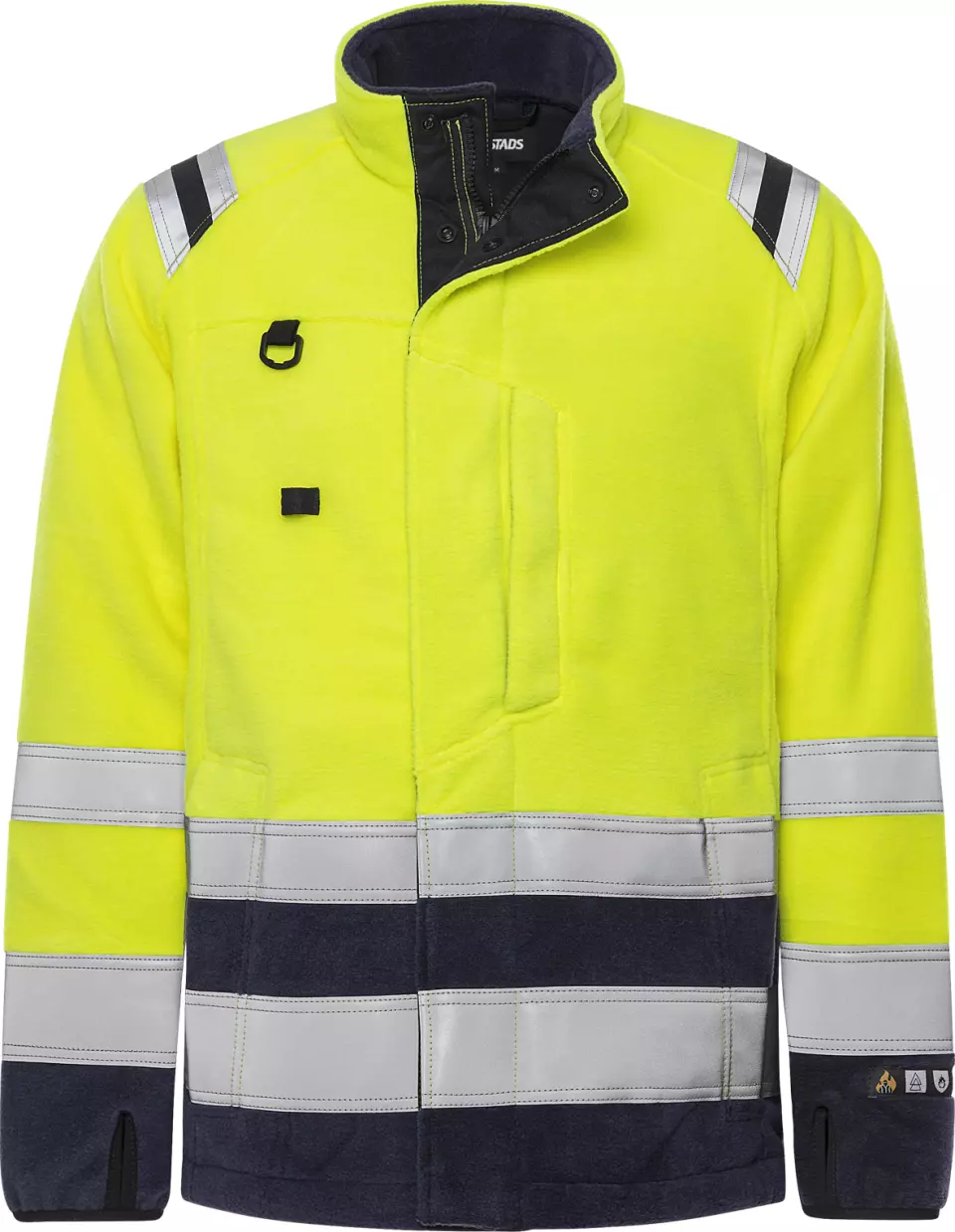Flamestat fleece jacket provides comprehensive protection against arc flash, heat and electrostatic hazards with inherently flame retardant material. The jacket combines the comfort and warmth of 370 g/m² fabric with versatile safety features, including reflective tape and antistatic fibers. Designed to withstand 25 wash cycles while maintaining its approval, and it is ÖKO-TEX® certified for environmental friendliness.
Product features:
- Reflective tape details on shoulders and sleeves
- Zip under front placket up to collar top and concealed press stud closure
- Chest pocket with concealed zip and D-ring
- Two front pockets
- Drawstring at hem
- Thumb hole in sleeves
Technical specifications:
- Material composition: 50% modacrylic, 30% cotton, 18% polyamide, 2% antistatic fiber
- Weight: 370 g/m²
- Inherently flame retardant
- Approval after 25 wash cycles
Standards:
- EN 61482-1-2 APC 1
- EN 61482-1-1 ELIM: 8.8 cal/cm² EBT: 9.2 cal/cm²
- EN ISO 11612 A1 B2 C2 F2
- EN 1149-5
- ÖKO-TEX® certified
Flamestat fleece jacket provides comprehensive protection against arc flash, heat and electrostatic hazards with inherently flame retardant material. The jacket combines the comfort and warmth of 370 g/m² fabric with versatile safety features, including reflective tape and antistatic fibers. Designed to withstand 25 wash cycles while maintaining its approval, and it is ÖKO-TEX® certified for environmental friendliness.
Product features:
- Reflective tape details on shoulders and sleeves
- Zip under front placket up to collar top and concealed press stud closure
- Chest pocket with concealed zip and D-ring
- Two front pockets
- Drawstring at hem
- Thumb hole in sleeves
Technical specifications:
- Material composition: 50% modacrylic, 30% cotton, 18% polyamide, 2% antistatic fiber
- Weight: 370 g/m²
- Inherently flame retardant
- Approval after 25 wash cycles
Standards:
- EN 61482-1-2 APC 1
- EN 61482-1-1 ELIM: 8.8 cal/cm² EBT: 9.2 cal/cm²
- EN ISO 11612 A1 B2 C2 F2
- EN 1149-5
- ÖKO-TEX® certified
Flamestat fleece jacket provides comprehensive protection against arc flash, heat and electrostatic hazards with inherently flame retardant material. The jacket combines the comfort and warmth of 370 g/m² fabric with versatile safety features, including reflective tape and antistatic fibers. Designed to withstand 25 wash cycles while maintaining its approval, and it is ÖKO-TEX® certified for environmental friendliness.
Product features:
- Reflective tape details on shoulders and sleeves
- Zip under front placket up to collar top and concealed press stud closure
- Chest pocket with concealed zip and D-ring
- Two front pockets
- Drawstring at hem
- Thumb hole in sleeves
Technical specifications:
- Material composition: 50% modacrylic, 30% cotton, 18% polyamide, 2% antistatic fiber
- Weight: 370 g/m²
- Inherently flame retardant
- Approval after 25 wash cycles
Standards:
- EN 61482-1-2 APC 1
- EN 61482-1-1 ELIM: 8.8 cal/cm² EBT: 9.2 cal/cm²
- EN ISO 11612 A1 B2 C2 F2
- EN 1149-5
- ÖKO-TEX® certified
